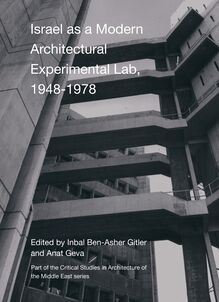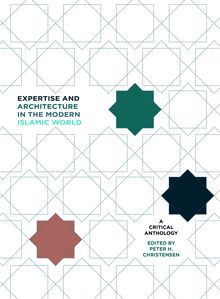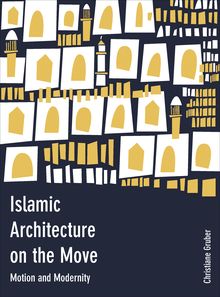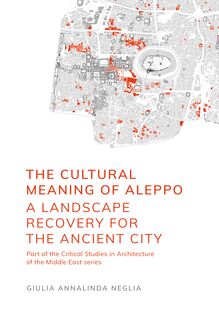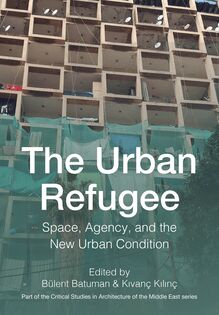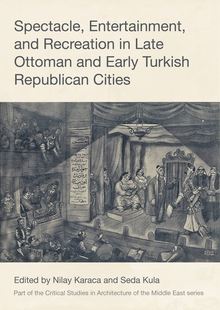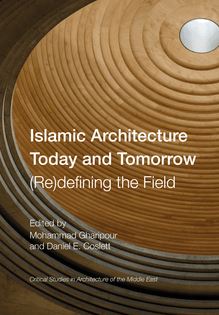-
 Univers
Univers
-
 Ebooks
Ebooks
-
 Livres audio
Livres audio
-
 Presse
Presse
-
 Podcasts
Podcasts
-
 BD
BD
-
 Documents
Documents
-
- Cours
- Révisions
- Ressources pédagogiques
- Sciences de l’éducation
- Manuels scolaires
- Langues
- Travaux de classe
- Annales de BEP
- Etudes supérieures
- Maternelle et primaire
- Fiches de lecture
- Orientation scolaire
- Méthodologie
- Corrigés de devoir
- Annales d’examens et concours
- Annales du bac
- Annales du brevet
- Rapports de stage
La lecture à portée de main
Vous pourrez modifier la taille du texte de cet ouvrage
Découvre YouScribe en t'inscrivant gratuitement
Je m'inscrisDécouvre YouScribe en t'inscrivant gratuitement
Je m'inscrisEn savoir plus
Vous pourrez modifier la taille du texte de cet ouvrage
En savoir plus

Description
This collection discusses the innovative and experimental architecture of Israel during its first three decades following the nation’s establishment in 1948. Written by leading researchers, the volume highlights new perspectives on the topic, discussing the inception, modernization and habitation of historic and lesser-researched areas alike in its interrogation. Inbal Ben-Asher Gitler and Anat Geva show how Israeli nation building, in its cultural, political and historical contexts, constituted an exceptional experiment in modern architecture. Examples include modern experiments in mass housing design; public architecture such as exhibition spaces, youth villages and synagogues; a necessary consideration of climate in modern architectural experiments; and the exportation of Israeli modern architecture to other countries.
Introduction by Inbal Ben-Asher Gitler and Anat Geva
Part I: Modern Experiments in Rural and Urban Design
Chapter 1: The Experimental Integrative Habitation Unit as a Modern Experimental Lab in Israel by Yair Barak
Chapter 2: From A-Locality to Locality: The Gur Neighbourhood in Hatzor HaGlili by Oryan Shachar
Chapter 3: Un-Settling Established Narratives: The West Bank ‘Communal Settlement’ as Architecture and Planning Lab by Yael Allweil
Chapter 4: Landscape Modernism and the Kibbutz: The Work of Shmuel Bickels (1909–1975) by Elissa Rosenberg
Part II: Public Architecture as Testing Ground
Chapter 5: A Museum In Between: The Israel Museum, Jerusalem, 1965 by Eliyahu Keller
Chapter 6: Genia Averbuch: Modernism Meets the Vernacular: Youth Villages for New Immigrants, 1948–1955 by Sigal Davidi
Chapter 7: The Modern Israeli Synagogue as an Experiment in Jewish Tradition by Naomi Simhony
Chapter 8: Israeli Architecture at a Turning Point: Designs for the Israeli Center for Technological Awareness, 1978 by Jeremy Kargon
Part III: Considering Climate
Chapter 9: Minus 400 and Over 40 Degrees: Architecture in the Dead Sea, 1948–1971 by Daphne Binder and Theodore Kofman
Chapter 10: Architectonic Experimentation in Early Israeli Architecture Vis-à-Vis Climatic Constraints: The Case of the Negev Desertby Isaac A. Meir, Rachel Bernstein and Keren Shalev
Chapter 11: The Other Side of Climate: The Unscientific Nature of Climatic Architectural Design in Israel by Or Aleksandrowicz
Part IV: Reflections Abroad
Chapter 12: Building and Re-Building a Nation’s Identity: Israeli and Italian Architectural Culture, Their Representation and the Role of Bruno Zevi (1918–2000) by Matteo Cassani Simonetti
Chapter 13: Prefabricating Nativism: The Design of the Israeli Knesset, 1956–1966 and the Sierra Leone Parliament, 1960–1964 by Ayala Levin
Sujets
Residential
Buildings
Jewish
Religious
Kibutz
Knéset
Sierra Leona
Jews
Architecture of Italy
Israel
Parliament of Sierra Leone
Renovation
Jewish studies
Modern history
Hatzor HaGlilit
Residential area
History of the Middle East
General officer
Negev
Kibbutz
Region
Building
West Bank
Middle East
Jerusalem
Judaism
Dead Sea
Bruno Zevi
Regional
General
Cultural Studies
Public
Kibboutz
Knesset
Sierra Leone
Architecture
Informations
| Publié par | Intellect Books |
| Date de parution | 13 novembre 2019 |
| Nombre de lectures | 0 |
| EAN13 | 9781789380651 |
| Langue | English |
| Poids de l'ouvrage | 3 Mo |
Informations légales : prix de location à la page 0,4650€. Cette information est donnée uniquement à titre indicatif conformément à la législation en vigueur.
Extrait
Israel as a Modern Architectural Experimental Lab, 1948–1978 is the fourth book in the Critical Studies in Architecture of the Middle East series. The series is edited by Mohammad Gharipour (Morgan State University, Baltimore) and Christiane Gruber (University of Michigan, Ann Arbor).
Critical Studies in Architecture of the Middle East is devoted to the most recent scholarship concerning historic and contemporary architecture, landscape and urban design of the Middle East and of regions shaped by diasporic communities more globally. We invite interdisciplinary studies from diverse perspectives that address the visual characteristics of the built environment, ranging from architectural case studies to urban analysis.
First published in the UK in 2020 by
Intellect, The Mill, Parnall Road, Fishponds, Bristol, BS16 3JG, UK
First published in the USA in 2020 by
Intellect, The University of Chicago Press, 1427 E. 60th Street,
Chicago, IL 60637, USA
Copyright © 2020 Intellect Ltd
All rights reserved. No part of this publication may be reproduced, stored in a retrieval system or transmitted, in any form or by any means, electronic, mechanical, photocopying, recording or otherwise, without written permission.
A catalogue record for this book is available from the British Library.
Copy-editor: Emma Rhys
Cover designers: Aleksandra Szumlas, Inbal Ben-Asher Gitler and Anat Geva
Cover art: Arieh and Eldar Sharon, Sackler School of Medicine,
Tel Aviv University, 1967–1972. Courtesy of the Azrieli Architecture Archive, Arieh Sharon Collection, Yael Aloni Photograph Collection.
Production editor: Faith Newcombe
Series: Critical Studies in Architecture of the Middle East
Series editors: Mohammad Gharipour and Christiane Gruber
Typesetting: Contentra Technologies
Print ISBN: 978-1-78938-064-4
ePDF ISBN: 978-1-78938-066-8
ePub ISBN: 978-1-78938-065-1
Series ISSN: 2059-3562
Printed and bound by Gomer, UK.
Acknowledgements
We would like to thank the editors of Critical Studies in Architecture of the Middle East series, Mohammad Gharipour and Christiane Gruber, for their guidance throughout the process of publishing this book.
We thank all the contributors for their hard work, which elevated the book’s scholarship.
We would like to thank Isabelle Kargon for her diligent work on the book’s index.
We also thank Katie Evans and Faith Newcombe from Intellect Books for working with us on editing and production.
Finally, we would like to thank our academic institutions, Sapir Academic College, Israel and the College of Architecture, Texas A&M University, USA, for their funding of the book’s index.
Contents
Introduction
Inbal Ben-Asher Gitler and Anat Geva
Section I: Modern Experiments in Rural and Urban Design
The Experimental Integrative Habitation Unit as a Modern Experimental Lab in Israel
Yair Barak
From A-Locality to Locality: The Gur Neighbourhood in Hatzor HaGlilit
Oryan Shachar
Both City and Village: The West Bank ‘Communal Settlement’ as Architecture 69 and Planning Lab
Yael Allweil
Landscape Modernism and the Kibbutz: The Work of Shmuel Bickels (1909–1975)
Elissa Rosenberg
Section II: Public Architecture as a Testing Ground
A Museum in Between: The Israel Museum, Jerusalem, 1965
Eliyahu Keller
Genia Averbuch: Modernism Meets the Vernacular - Youth Villages for New Immigrants, 1948–1955
Sigal Davidi
The Modern Israeli Synagogue as an Experiment in Jewish Tradition
Naomi Simhony
Israeli Architecture at a Turning Point: Designs for the Israeli Center for Technological Awareness, 1978
Jeremy Kargon
Section III: Considering Climate
Minus 400 and Over 40 Degrees: Architecture in the Dead Sea, 1948–1971
Daphne Binder and Theodore Kofman
Architectonic Experimentation in Early Israeli Architecture Vis-à-Vis Climatic Constraints: The Case of the Negev Desert
Isaac A. Meir, Rachel Bernstein, and Keren Shalev
The Other Side of Climate: The Unscientific Nature of Climatic Architectural Design in Israel
Or Aleksandrowicz
Section IV: Reflections Abroad
Building and Re-Building a Nation’s Identity: Israeli and Italian Architectural Culture, Their Representation and the Role of Bruno Zevi (1918–2000)
Matteo Cassani Simonetti
Prefabricating Nativism: The Design of the Israeli Knesset, 1956–1966, and the Sierra Leone Parliament, 1960–1964
Ayala Levin
Conclusion
Inbal Ben-Asher Gitler and Anat Geva
Author Biographies
Index
Introduction
Inbal Ben-Asher Gitler and Anat Geva
H istorian Roger Adelson has argued, with regard to mid-twentieth-century western international politics, that a ‘view of the Middle East gained currency that tended to simplify the region’s diversity and complexity’. 1 As Adelson writes, this is a view that persists even today, at least in the media. 2 As architectural historians, we are given the task of unraveling and exposing a region’s diversity and complexity, in retracing the physical space of nation building. In the Middle East, physical territories have been deconstructed and reassembled by conflict and war, migration and exile, nations and communities. The contours of this space delineate the similarities and the unique architectural production of each of its nations. By presenting new research on Israeli architecture, we hope to deepen not only our understanding of Israeli architectural culture, but also to contribute to the research on the region’s architecture in general and its recent history.
Studies of nineteenth- and twentieth-century Middle Eastern architecture, which have proliferated during the past two decades, have already begun to reveal the intricate connections between architectural practices, as well as the diverse negotiation of tradition and innovation among different places in the Middle East, in its wider geographical definition. 3 Recent scholarship dealing with these shared architectural histories has challenged established dichotomies of modern versus traditional, East versus West, and centre versus periphery. 4 These alternative histories present analyses and discuss the architects who operated within expanding and rapidly transforming ‘boundaries’ of aesthetic and formal criteria. However, only a few scholars have discussed these issues in regards to Israel.
The compilation presented in this volume seeks to add significant insights to our reassessment of these concepts and to the understanding of Israeli architecture as an experimental laboratory of modern architecture. The essays included in this book discuss the architecture of Israel during its first three decades following the state’s establishment in 1948.
The idea of a modern Jewish state in the Land of Israel was already envisioned by Theodor Herzl’s Zionist utopia at the end of the nineteenth century. In his book, Altneuland (‘Old New Land’), written in 1902, he describes an independent, secular, democratic Jewish state, which would follow modern Europe. 5 His Zionism is described by Steven Smith as ‘a [technical] idealism of ends with a Machiavellianism of means’. 6 Herzl’s contemporary, Achad Ha’am, envisioned a new Zionist-Jewish culture that would promote the core image of a new modern Jew based on western European culture. 7 It should be noted that this ideal did not account for Eastern European Jewish culture or the cultures of Jews from Muslim countries.
Indeed, Zionism, the secular ideology supporting and promoting the return of Jews to Palestine/Eretz Israel, hailed the western system of culture, economics, and politics as the model society upon which a future Jewish nation would be established. The Yishuv – the Zionist settlement of Palestine/Eretz Israel – developed according to this ideology from the middle of the nineteenth century until the end of the British Mandate in Palestine in 1948. It adopted European modernism as its technological, structural, and stylistic building approach. 8 This architecture, which provided the physical space of the sociopolitical structure of Jewish settlement in Palestine, became the basis and foundation for ensuing Israeli architecture. The Yishuv established distinct typologies for both urban and rural settlements, and by the end of British rule and Israel’s establishment in 1948, these too were fully developed.
The year 1948 – when Israel was established as an independent nation-state – is the departure point for this book. Its timeframe terminates in 1978. The state’s establishment affected new developments in urban and rural planning, as well as in architecture, and reflected social and political transformations. The year 1978 was a turning point, and generally marks two significant events: (1) the rise of the Likud government (1977), which brought about significant political changes in policies and ideologies and signified profound social transformations in the country; and (2) the signing of peace accords with Egypt (1978), which was the culmination of major political developments throughout the region. As several chapters in the present volume demonstrate, these temporal boundaries allow for flexibility, and can be challenged from various critical positions.
In many ways, Israel’s built environment was a continuation of pre-state architectural culture that served as a civic vehicle for building the nation-state. Still, architecture during its first three decades was innovative and experimental in character. It presented a reassessment of modernist architectural approaches emanating from Europe and to some extent from the United States, while expressing local sociopolitical ideologies and economic constraints. Three of these ideologies had a profound impact upon Israeli architecture. First, the perception of Israel as progressive, and as home to an advanced new Jewish society that is part of western culture. This was reflected in the adaptation of western architectural culture, along with its technologies. Second, the use of architecture as a means to express the idea of Israel as a ‘melting p
-
 Univers
Univers
-
 Ebooks
Ebooks
-
 Livres audio
Livres audio
-
 Presse
Presse
-
 Podcasts
Podcasts
-
 BD
BD
-
 Documents
Documents
-
Jeunesse
-
Littérature
-
Ressources professionnelles
-
Santé et bien-être
-
Savoirs
-
Education
-
Loisirs et hobbies
-
Art, musique et cinéma
-
Actualité et débat de société
-
Jeunesse
-
Littérature
-
Ressources professionnelles
-
Santé et bien-être
-
Savoirs
-
Education
-
Loisirs et hobbies
-
Art, musique et cinéma
-
Actualité et débat de société
-
Actualités
-
Lifestyle
-
Presse jeunesse
-
Presse professionnelle
-
Pratique
-
Presse sportive
-
Presse internationale
-
Culture & Médias
-
Action et Aventures
-
Science-fiction et Fantasy
-
Société
-
Jeunesse
-
Littérature
-
Ressources professionnelles
-
Santé et bien-être
-
Savoirs
-
Education
-
Loisirs et hobbies
-
Art, musique et cinéma
-
Actualité et débat de société
- Cours
- Révisions
- Ressources pédagogiques
- Sciences de l’éducation
- Manuels scolaires
- Langues
- Travaux de classe
- Annales de BEP
- Etudes supérieures
- Maternelle et primaire
- Fiches de lecture
- Orientation scolaire
- Méthodologie
- Corrigés de devoir
- Annales d’examens et concours
- Annales du bac
- Annales du brevet
- Rapports de stage
